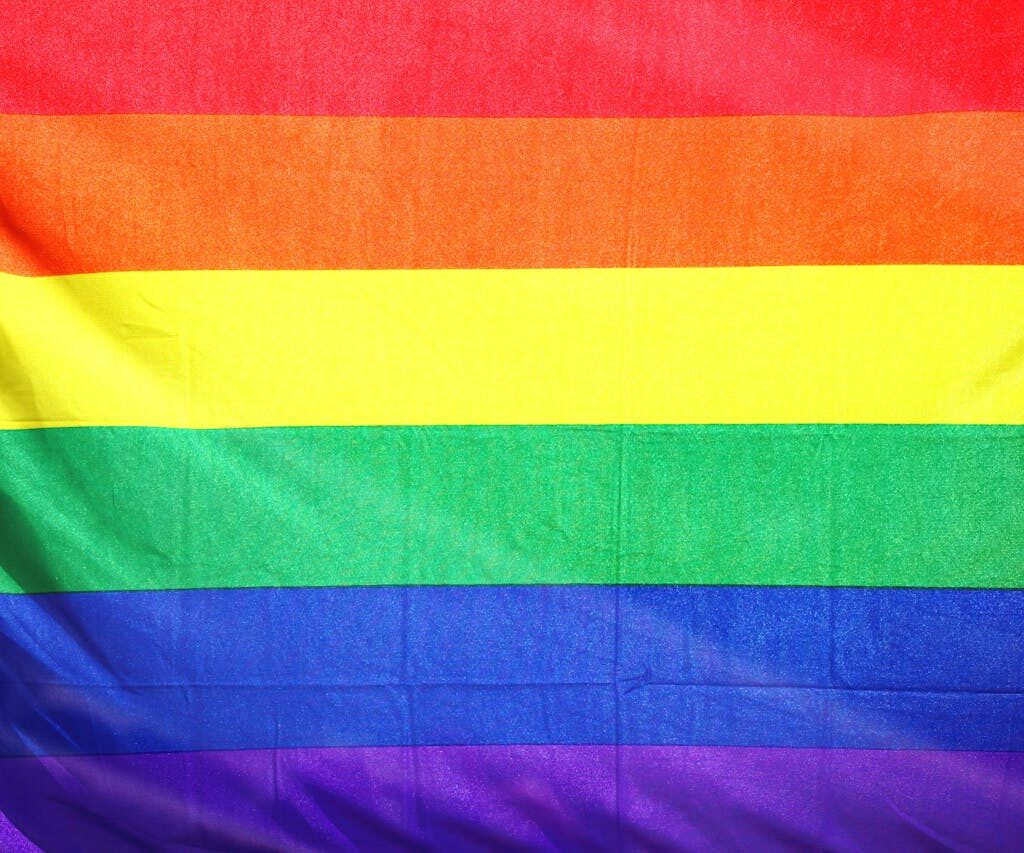The gay pride flag is unarguably a symbol of resistance and resilience. Though its original rainbow design may seem simple, it represents the various identities within the LGBTQ+ community. In recent years, a reworking of the flag has recognized the community’s growth, though its original intent remains.
Keep reading to learn about the history behind the gay pride flag, its symbolism, and its importance.
Origins of the Gay Pride Flag
The Human Rights Campaign (HRC), an organization __, explains that the gay pride flag’s origins, like much of gay history, lie within activism. Harvey Milk, a prominent leader of the San Francisco LGBTQ+ community during the 1970s and known for being one of the first openly gay US officials, asked artist Gilbert Baker to design a symbol of gay pride. As a result, the Gilbert Baker pride flag features nine colors, each representing a different part of the LGBTQ+ community. The Museum of Modern Art in New York City writes of Baker’s pride flag being “inspired by the proliferation of the US flag in popular culture as a symbol of commemoration, power, and festivity.” Undoubtedly, the prominent culture of national pride in the US inspires a personal sense of pride in one’s individuality.
Symbolism of the Gay Pride Flag
As the HRC writes of the original Gilbert Baker pride flag, hot pink represents sex, red symbolizes life, orange stands for healing, yellow equals sunlight, green stands for nature, turquoise symbolizes magic and art, and indigo represents serenity. Violet embodies the spirit of the LGBTQ+ community.
Making Queer History, a blog detailing the history of the LGBTQ+ community, writes that Baker chose to represent the LGBTQ+ community with a rainbow due to its long-standing meaning as a symbol of hope, as seen in the Book of Genesis and in Chinese, Egyptian, and Native American history.
Inclusivity: A Revamped Pride Flag

2017 the Philadelphia Pride Flag emerged at the city’s pride event. It was commissioned by the Philadelphia City Council, seeking to recognize the presence and contribution of queer communities of color through the addition of black and brown stripes.
Similarly, the Philadelphia Pride Flag later evolved into the Progress Pride Flag, created by Daniel Quaser. The Progress Pride Flag features white, pink, and light blue stripes to represent the transgender community. While the black and brown stripes still represent queer communities of color, the black stripe recognizes the thousands of lives lost to the HIV/AIDS crisis in the 1980s and 1990s.
Conclusion
The gay pride flag’s origins lie within activism in the LGBTQ+ community, whose members sought a symbol to represent their presence and fight. Each color in the original design of the Pride flag stands for each part of the LGBTQ+ community. In later years, the flag has evolved, calling for more recognition of communities of color and more representation of transgender individuals.
Interested in learning more about the LGBTQ+ community? Keep reading at Ferry Godmother Productions.

